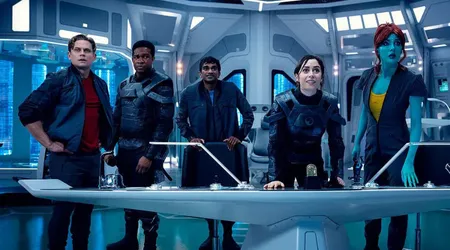How Gaming Influences Storytelling in Other Media

Gaming Influences Storytelling in Other Media profoundly, forcing traditional formats like film and television to evolve or risk becoming irrelevant.
Anúncios
Video games are no longer a niche hobby; they represent the dominant cultural mode of interactive, player-driven narrative consumption.
This shift dictates that linear storytelling must adopt game mechanics to maintain audience engagement.
The dynamic nature of the gaming medium, centered on agency and consequence, provides a powerful new toolkit for scriptwriters and directors.
They are borrowing deeply from gaming’s narrative techniques to create richer, more immersive, and ultimately more captivating experiences.
Anúncios
This convergence of media is reshaping how stories are constructed and consumed globally.
Why Is Player Agency Now Expected in Passive Media?
Decades of sophisticated video game design have fundamentally altered audience expectations regarding narrative control and personal impact.
Viewers raised on games demand more than simply observing a story; they crave the illusion of participating in it, even within a fixed, linear medium.
This shift in consumer psychology means that traditional, wholly passive viewing now feels less stimulating to a large segment of the audience.
The expectation of ‘agency’ that one’s actions or perceived input should matter is a direct import from game design, compelling film and TV to integrate choice and consequence subtly.
++ Top Tips for Streaming While Maintaining a Healthy Lifestyle
What is the “Branching Narrative” Technique in Cinema?
The branching narrative, a mainstay of RPGs and adventure games, is now influencing cinematic structure, moving beyond simple non-linearity.
This technique involves presenting key moments of choice that feel like they alter the direction of the plot, even when the final outcome remains scripted.
Netflix’s Black Mirror: Bandersnatch exemplified this trend, allowing viewers to choose the protagonist’s fate and creating multiple endings.
While still a controlled experience, this interactivity directly mimics the player agency core to video game narratives, fundamentally blurring the line between viewer and participant.
Also read: How Gaming Cafes Are Reviving Social Gaming
How Does the Quest Structure Enhance Television Plots?
Modern television series often adopt the game-like structure of a main quest (the overarching season plot) supported by side quests (episodic subplots).
This narrative layering keeps the audience engaged across multiple timescales, similar to managing a game’s diverse objectives.
A central storyline remains the anchor, yet individual episodes function as self-contained “missions” that often introduce character growth or necessary resources for the main objective.
This familiar structure provides satisfying minor closures while always driving toward the larger, high-stakes conclusion.
Read more: Best Gaming-Themed Apparel Brands
Why Do Open-World Game Concepts Appeal to Audiences?
The sheer scope and detail of modern open-world games have raised the bar for world-building in all visual media.
Audiences now expect fictional settings to feel fully realized, with deep lore and history existing independently of the central characters.
This design philosophy manifests in films and shows that dedicate significant time to establishing elaborate ecosystems, political landscapes, or environmental storytelling elements.
The world itself becomes a silent, active character, inviting viewers to imagine exploring beyond the camera’s frame.

How Does Gaming Influence Visual and Emotional Pacing?
Gaming has perfected the rhythm of narrative delivery the seamless blend of high-octane action, tense character exposition, and quiet moments of environmental exploration.
This sophisticated pacing model is rapidly being adopted to optimize emotional impact in cinema.
Directors are increasingly employing “in-engine” or “environmental storytelling” techniques, where narrative details are not spoken but are discovered visually through objects, wreckage, or background elements.
This reliance on visual discovery encourages a level of active viewing rarely seen in traditional film.
What is the Cinematic Impact of the “Cutscene” and “QTE”?
The dramatic, highly polished cutscene a non-interactive, filmic interlude used to advance the plot—has long been gaming’s way of rewarding players.
Filmmakers now utilize these moments to deliver crucial, high-impact emotional beats with intense visual fidelity.
Conversely, the concept of the Quick-Time Event (QTE), where players must react instantly, translates into rapid-fire editing and jarring, sudden action sequences designed to jolt the passive viewer.
Both techniques, borrowed directly, maximize engagement through deliberate shifts in pacing.
Why Is “Show, Don’t Tell” Amplified by Gaming Techniques?
Environmental storytelling, a cornerstone of successful game design, is the ultimate expression of “Show, Don’t Tell.”
In games like The Last of Us, the player learns more about the apocalypse from a faded note or an abandoned family photo than from dialogue.
This immersive technique is now widely used in TV and film to deepen immersion and world-building subtly.
It treats the audience as intelligent investigators who piece together the narrative from carefully planted visual clues, rather than relying on heavy-handed exposition.
How Has the “Respawn” Concept Altered Narrative Tension?
While a film’s protagonist cannot literally “respawn,” the narrative use of non-fatal, yet costly, setbacks mirrors this game mechanic.
Characters repeatedly face near-death experiences or devastating failures, only to find a difficult path back, maintaining high-stakes tension without permanent narrative closure.
This structure allows for deeper exploration of character resilience and moral consequence without immediately concluding the story arc.
It creates an almost endless cycle of challenge, failure, learning, and re-engagement a compelling hook for serial content.
What Data Supports the Demand for Interactive Content?
The shift toward interactive and engaging content is quantifiable across the media landscape, proving that audiences actively seek more game-like viewing experiences.
The future of content consumption is inextricably linked to agency and personalization.
A telling statistic reveals the commercial appetite: 81% of marketers surveyed in 2025 agreed that interactive content, often gamified in nature, grabs audience attention more effectively than static content.
This trend is rapidly pushing streaming platforms toward similar interactive models.
| Narrative Element Borrowed from Gaming | Application in Film/TV | Effect on Audience Engagement |
| Branching Narrative/Decision Points | Multiple, viewer-selected paths and endings (e.g., Netflix specials) | Increases active participation and sense of ownership. |
| Environmental Storytelling | Visual clues in the background (posters, objects) replacing dialogue | Encourages investigation, deepens world immersion. |
| Loot/Skill Tree Metaphor | Characters acquiring new, crucial skills or items only after completing a major hurdle | Provides clear milestones and satisfying character progression. |
| Non-Linear Narrative/Time Jumps | Stories told out of chronological order (like uncovering game memories) | Heightens mystery and encourages cognitive engagement. |
How Does the “Skill Tree” Concept Relate to Character Arcs?
The concept of a character developing through a structured ‘skill tree’ where effort unlocks defined, useful abilities has become a strong narrative blueprint.
It offers a clear, quantifiable visual for character growth that resonates with modern viewers.
When a character trains or studies, they are not just passively improving; they are acquiring a ‘skill point’ that will be used to overcome a future ‘boss battle.’
This structured progression makes their efforts feel deliberate and their eventual success earned.
Can Streaming Platforms Fully Embrace Gamification?
Streaming services are actively exploring how to integrate more gamification to increase subscriber retention and viewing time.
Elements like personalized viewing paths, reward badges for completing a series, or real-time polling during a show are becoming commonplace.
This data-driven approach aims to turn passive viewing into a quantifiable, goal-oriented activity. Why shouldn’t watching a new series feel as rewarding as achieving a new level in a video game?
What Are the Most Intelligent Narrative Borrowings?
The most intelligent and effective narrative borrowings from gaming transcend simple visual spectacle.
They involve integrating core systems that enhance emotional connection and provide deep structural stability to the story, creating a more cohesive, living experience for the viewer.
The best screenwriters understand that they are not just telling a story; they are designing an experience that allows the audience to feel like the story is happening to them, or at least with them.
This level of psychological immersion is the ultimate lesson learned from gaming.
What is the “Emergent Narrative” Approach in Writing?
Emergent narrative, where the story is generated by the interplay of character motivations and environmental systems rather than a rigid script, is a powerful new tool.
While difficult for linear media, it inspires writers to create robust, self-consistent fictional worlds.
An example of this is a family drama where the core conflict arises naturally from the characters’ established flaws and an unforgiving socio-economic system (the ‘game world’) rather than a contrived plot device.
The story feels organic and terrifyingly real, mirroring the best emergent moments in games like The Sims or Crusader Kings.
How Does Gaming Influence Emotional and Moral Ambiguity?
Video games, particularly modern RPGs, excel at presenting complex moral dilemmas without clear-cut “good” or “evil” choices.
The player must live with the grey area, an emotional consequence often more powerful than a simple win or loss.
This commitment to moral ambiguity is a crucial aspect of how Gaming Influences Storytelling in Other Media.
Film and TV are now prioritizing complex, flawed protagonists and antagonists, forcing the audience to wrestle with ethical questions without the comfort of simple categorization.
Conclusion: The Audience is the Protagonist
The indelible influence of gaming on narrative is clear: the audience is evolving from a passive recipient into a cognitive participant.
The mastery of pacing, the structural integration of quests, and the psychological impact of agency are defining how we craft compelling stories in 2025.
Gaming Influences Storytelling in Other Media by making interaction and immersion the new gold standard.
This borrowing is a positive, creative force that elevates the entire entertainment industry.
The question is no longer if games will influence other media, but how quickly those media can adapt to the expectations of an interactive-native audience.
What structural element from your favorite game do you think should be incorporated into the next blockbuster series? Share your most compelling ideas below.
Frequently Asked Questions
Is the “Non-Linear Narrative” simply a video game technique?
No. Non-linear storytelling existed in literature and film (e.g., Pulp Fiction) long before video games.
However, games popularized its use not just as a stylistic device, but as a structural necessity tied to player exploration and memory retrieval, accelerating its use in modern media.
What is a specific, practical example of “Environmental Storytelling” in a TV show?
Consider a scene in a dystopian series. Instead of having a character explain poverty, the camera lingers on a kitchen table where a single, half-eaten can of beans is placed beside a faded, framed degree.
This visual composition instantly tells a story of lost hope and resource scarcity without a single line of dialogue.
Will all films eventually become interactive like a game?
It is highly unlikely. While interactive formats will grow, the mass appeal of traditional, linear narrative remains strong.
Many audiences still prefer a curated, expertly paced story directed by a single artistic vision. Interactive cinema will exist as a high-engagement niche, not a full replacement.
How does the “Save Point” concept apply to film or TV?
The narrative equivalent of a “save point” in a long-running series is a powerful, emotional anchor event that resets or fundamentally refocuses the protagonist’s core mission.
This event provides a clear break and allows the character (and the viewer) to psychologically “restart” their commitment to the primary goal, often after a major trauma or success.
Are audiences truly ready for non-linear, fragmented stories?
Research suggests audiences are receptive but need balance.
While interactive content generates high engagement (as noted by the 81% marketing statistic), overly fragmented or cognitively taxing non-linear narratives can still cause “cognitive overload,” potentially alienating viewers.
The best adoption is subtle, structured, and emotionally grounded.
